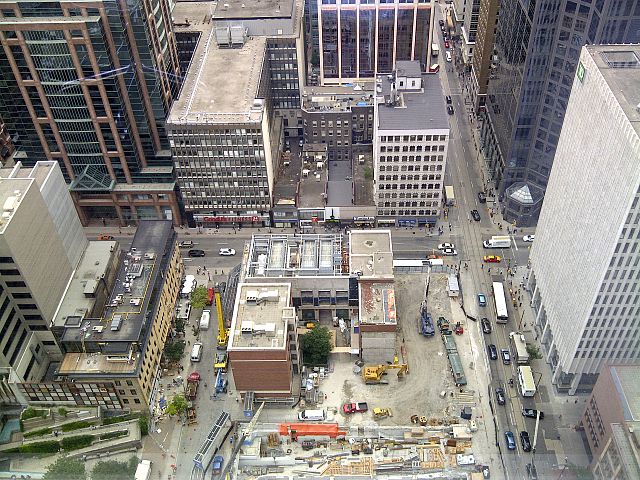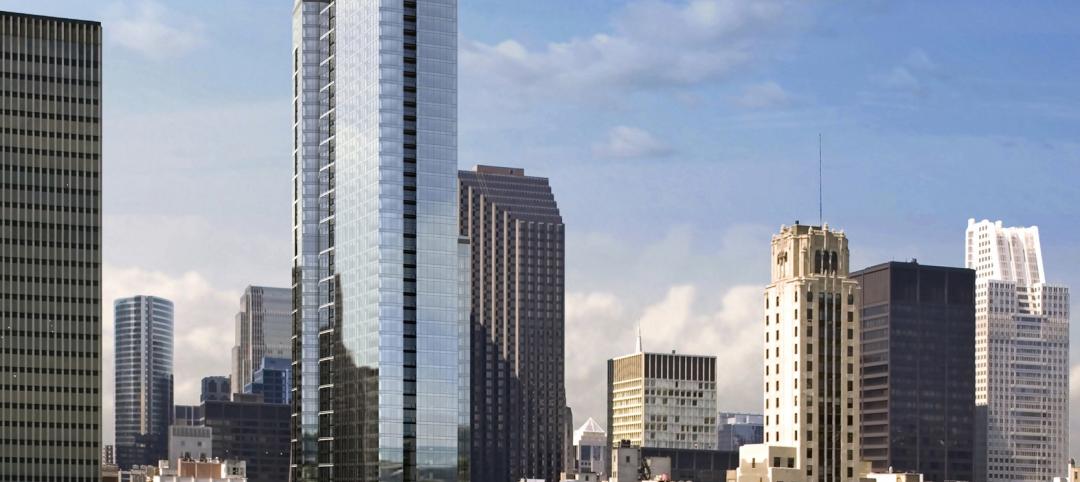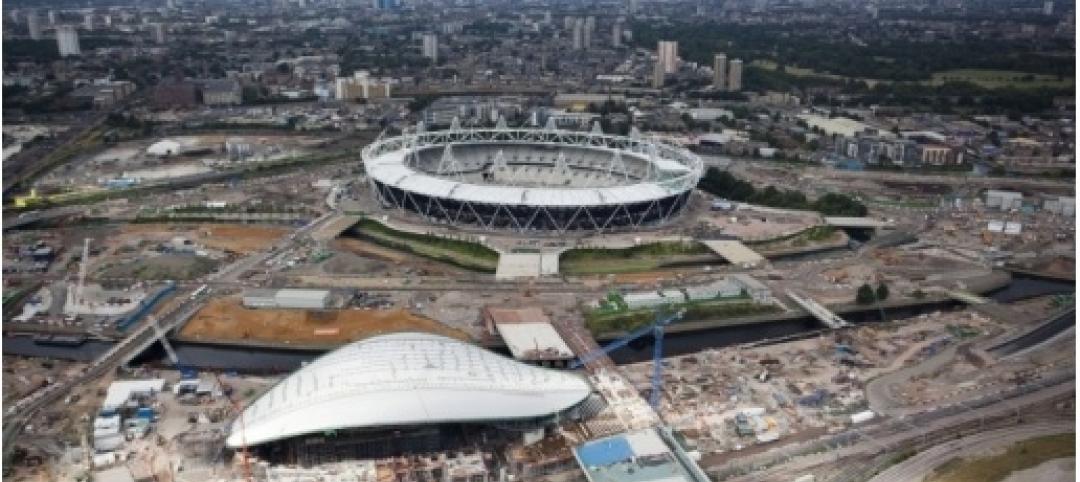The American Institute of Architects (AIA) today announced its “punch list” for Congress that, if completed, will ignite the construction economy by spurring much needed improvements in energy efficiency, infrastructure and resiliency and create jobs for small business
“America needs to create more jobs, to strengthen communities, and find help for millions of young people to succeed in the new economy,” said Robert Ivy, CEO of the American Institute of Architects, "so we've created a punch list—a term that enumerates unfinished items in a construction contract."
“The AIA’s Congressional punch list will help Congress satisfy its implicit contract with the American people to spur growth and create jobs,” Ivy said. “Our legislative agenda reflects the interests of our members, which not so coincidentally reflects the priorities of the American people.”
“America needs to create more jobs, to strengthen communities, and find help for millions of young people to succeed in the new economy,” said Robert Ivy, CEO of the American Institute of Architects. A punch list is a list of actions that need to be taken to satisfy the terms of a contract.
“The AIA’s Congressional punch list will help Congress satisfy its implicit contract with the American people to spur growth and create jobs,” Ivy said. “Our legislative agenda reflects the interests of our members, which not so coincidentally reflects the priorities of the American people.”
The AIA’s Punch List for Congress:
1. Re-enact Expired Energy Efficiency Tax Incentives
Congress left town in December without extending several important tax incentives that expired on New Year’s Day. Of most significance to the design and construction industry is the expiration of a tax break enacted in 2005 for energy efficient commercial buildings. The 179D deduction allowed building owners to claim a tax deduction of $1.80 per sq. ft. of building area to install systems that reduce the total energy and power costs by 50 percent or more when compared with a reference building. As Congress continues to debate long-term tax reform, it can boost the economy and create jobs today by reinstating this deduction.
2. Help Businesses by Reforming Government Procurement Rules
More than 97 percent of architecture firms employ 50 or fewer people; every project they design leads to job opportunities for millions of construction workers. But too many laws and regulations block innovative solutions that maximize the government’s return on its investment. Congress must reform procurement rules so that architects and designers can deliver projects that are safe, productive and sustainable. In 2014, the AIA is aggressively pushing for passage of The Design-Build Efficiency and Jobs Act of 2013 (H.R. 2750), introduced by Rep. Sam Graves (R-MO) in July, which would reform of the design-build contracting process so that more design and architectural firms can bid on federal contracts without fear of losing money in the process.
3. Invest in the Next Generation of Design Leaders
Millions of young people aspire to help their communities build a better future – but a lack of opportunity and the crushing cost of education hold them back. As a result, the design and construction industry faces a severe shortage of talent, at exactly the moment we need to start rebuilding for the future. The AIA urges Congress to pass the proposed National Design Services Act (NDSA), which will give architecture students the relief from crushing student loan debt as that granted young lawyers, doctors and others – in return for pro bono community service.
4. Invest in Infrastructure
Just as the Capitol dome, the symbol of American democracy is undergoing a multi-year renovation, so too must our nation’s infrastructure. Congress should pass a multi-year transportation reauthorization, which would allow for long-term planning that not only repairs roads and bridges but helps communities prosper; and enact a National Infrastructure Bank to finance the design, construction and repair of buildings and other vital infrastructure. Such moves would help free up capital for private sector building projects, and new ways to invest in public sector buildings, providing jobs in the short term and a more competitive economy in the long run.
5. Pass a Common-Sense Energy Efficiency Bill
Last session, the Senate Energy and Natural Resources Committee approved a bipartisan bill, the Energy Savings and Industrial Competitiveness Act of 2013 that would encourage families, businesses and the government to save energy. The Senate should take up the legislation, sponsored by Ohio Republican Rob Portman and New Hampshire Democrat Jeanne Shaheen, in 2014, and oppose efforts by the fossil fuel industry to repeal existing policies that save energy.
6. Help Communities Weather Natural Disasters
Each year, natural disasters kill tens of thousands of people worldwide and inflict billions of dollars in damage. Many parts of the United States are still recovering from tornadoes and hurricanes like Superstorm Sandy. Congress can help communities fortify themselves from such disasters by passing the Safe Building Code Incentive Act, introduced by New Jersey Democratic Senator Robert Menendez and Florida Republican Congressmen Mario Diaz-Balart, which encourages states to voluntarily adopt and enforce nationally recognized model building codes.
About The American Institute of Architects
Founded in 1857, members of the American Institute of Architects consistently work to create more valuable, healthy, secure, and sustainable buildings, neighborhoods, and communities. Through nearly 300 state and local chapters, the AIA advocates for public policies that promote economic vitality and public well being. Members adhere to a code of ethics and conduct to ensure the highest professional standards. The AIA provides members with tools and resources to assist them in their careers and business as well as engaging civic and government leaders, and the public to find solutions to pressing issues facing our communities, institutions, nation and world. Visit www.aia.org.
Related Stories
| Mar 2, 2011
Cities of the sky
According to The Wall Street Journal, the Silk Road of the future—from Dubai to Chongqing to Honduras—is taking shape in urban developments based on airport hubs. Welcome to the world of the 'aerotropolis.'
| Mar 2, 2011
How skyscrapers can save the city
Besides making cities more affordable and architecturally interesting, tall buildings are greener than sprawl, and they foster social capital and creativity. Yet some urban planners and preservationists seem to have a misplaced fear of heights that yields damaging restrictions on how tall a building can be. From New York to Paris to Mumbai, there’s a powerful case for building up, not out.
| Mar 1, 2011
Smart cities: getting greener and making money doing it
The Global Green Cities of the 21st Century conference in San Francisco is filled with mayors, architects, academics, consultants, and financial types all struggling to understand the process of building smarter, greener cities on a scale that's practically unimaginable—and make money doing it.
| Mar 1, 2011
How to make rentals more attractive as the American dream evolves, adapts
Roger K. Lewis, architect and professor emeritus of architecture at the University of Maryland, writes in the Washington Post about the rising market demand for rental housing and how Building Teams can make these properties a desirable choice for consumer, not just an economically prudent and necessary one.
| Mar 1, 2011
New survey shows shifts in hospital construction projects
America’s hospitals and health systems are focusing more on renovation or expansion than new construction, according to a new survey conducted by Health Facilities Management magazine and the American Society for Healthcare Engineering (ASHE). In fact, renovation or expansion accounted for 73% of construction projects at hospitals responding to the survey.
| Mar 1, 2011
AIA selects 6 communities for long-term sustainability program
The American Institute of Architects today announced it has selected 6 communities throughout the country to receive technical assistance under the Sustainable Design Assessment Team (SDAT) program in 2011. The communities selected are Shelburne, Vt., Apple Valley, Mn., Pikes Peak Region, Co., Southwest DeKalb County, Ga., Bastrop, Tx., and Santa Rosa, Ca. The SDAT program represents a significant institutional investment by the AIA in public service work to assist communities in developing policy frameworks and long term sustainability plans.
| Feb 24, 2011
Perkins+Will designs 100 LEED Certified buildings
Perkins+Will announced the Leadership in Energy and Environmental Design (LEED) certification of its 100th sustainable building, marking a key milestone for the firm and for the sustainable design industry. The Vancouver-based Dockside Green Phase Two Balance project marks the firm’s 100th LEED certified building and is tied for the highest scoring LEED building worldwide with its sister project, Dockside Green Phase One.
| Feb 24, 2011
New reports chart path to net-zero-energy commercial buildings
Two new reports from the Zero Energy Commercial Buildings Consortium (CBC) on achieving net-zero-energy use in commercial buildings say that high levels of energy efficiency are the first, largest, and most important step on the way to net-zero.
| Feb 24, 2011
Lending revives stalled projects
An influx of fresh capital into U.S. commercial real estate is bringing some long-stalled development projects back to life and launching new construction of apartments, office buildings and shopping centers, according to a Wall Street Journal article.
| Feb 23, 2011
London 2012: What Olympic Park looks like today
London 2012 released a series of aerial images that show progress at Olympic Park, including a completed roof on the stadium (where seats are already installed), tile work at the aquatic centre, and structural work complete on more than a quarter of residential projects at Olympic Village.










